Is that t-shirt you bought just a couple of weeks ago starting to look dull already?
Clothes don’t last forever, but there are things we can do to keep them looking new for longer.
It is possible, however, to give your favourite items a second and maybe even third life.
Here are 14 helpful and nifty tricks to bring those now-dull pieces back to life so that you can show them off time and time again.
1. Wash in Cold Water

Washing your clothes in warm water does have its benefits. It can help stop your clothes smelling mildewy and can help soiled clothing but should only be done when this odour occurs or if the item is heavily soiled.
Any other time, it’s fine to wash your clothes in cold (30°C) water. It’s good for the environment, great for your electricity bill and even better for the longevity of your garments. The clothes will be just as clean and the threads will last longer.
2. Wash Clothes Inside-Out

I know I’m probably sounding a lot like your mother here (if she’s anything like mine, she’ll have banged on about this at some point) but it’s important to wash your clothes inside out.
The most important part of your garments is the outside, so it only seems logical to protect it from the intensity of a washing machine.
Items with any of the following should always be washed inside out:
- Beading
- Embroidery
- Appliques
- Any other intricate detailing
3. Brighten with Vinegar (Not Bleach)
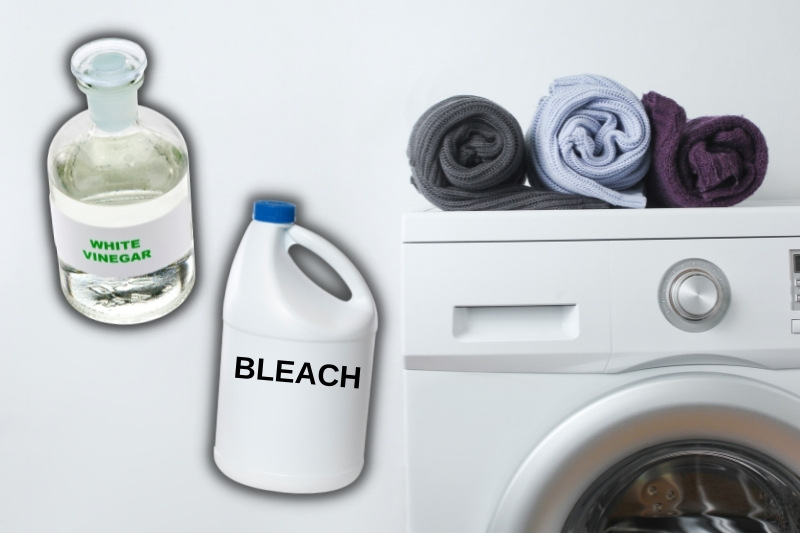
When it comes to whites, there are a lot of people who will swear by bleach to keep white items bright and full of life.
Fortunately for you (and the environment) vinegar does the same job, but is kinder to your clothes. Vinegar won’t wear out the fibres in your clothes like chlorine bleach would.
Here are some ways yo use vinegar to bring back the brightness in your whites:
- Pre-soak with vinegar – Before washing your white garments, create a vinegar solution by mixing one part white vinegar with four parts water. Fill a basin or sink with the solution and let your clothes soak for about 30 minutes to an hour. The acetic acid in the vinegar will break down any residue or yellowing on the fabric, restoring the brightness.
- Add vinegar to the wash – You can use vinegar in your washing machine. Simply add 1/2 to 1 cup of white vinegar to the final rinse cycle of your washing machine. The vinegar will act as a natural fabric softener and brightener, leaving your whites looking fresh and clean.
- Address stubborn stains – For stubborn stains on your white clothes, apply undiluted vinegar directly to the affected area before washing. Gently rub the vinegar into the stain, and then proceed with the regular washing process. Vinegar’s acidic properties help break down the stains, making them easier to remove.
4. Read the Care Labels and Follow Their Instructions
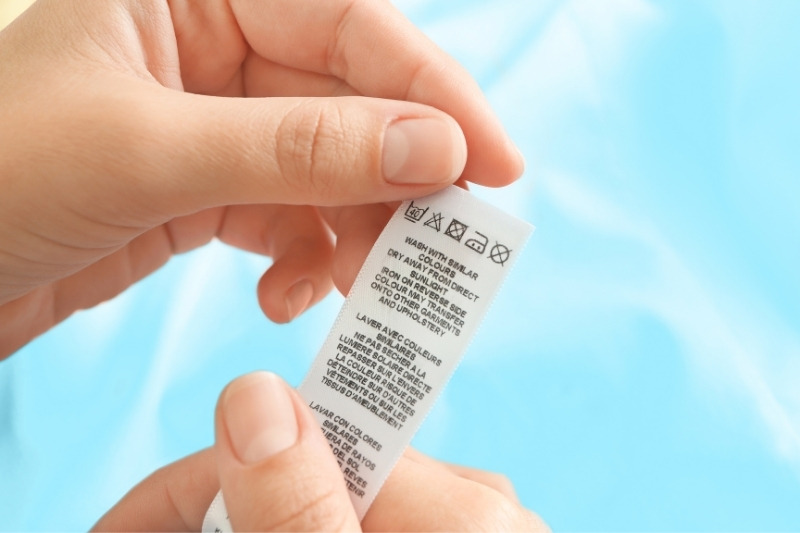
Those tags inside clothing really can be quite irritating sometimes but they are there for a reason. Before washing any item, read the labels!
The care label will tell you how to wash the item (and more importantly, how not to) and even what setting they should be washed on.
Remember: A garment which says “wash in hot water” can be washed in cold but washing cold water garments in warm water can be damaging.
5. Wrap Your Clothes Correctly When Storing Them
If you keep some of your clothes tucked away in plastic boxes or even wrap them in plastic bags, this could be contributing to your clothes losing their life.
Plastic breaks down over time and can interact with the fabric, weakening or changing the colour.
Keeping your clothes in plastic can also trap in humidity which can give your garments that mildew odour. Instead, use cotton or cloth.
6. Choose Your Laundry Detergent Wisely
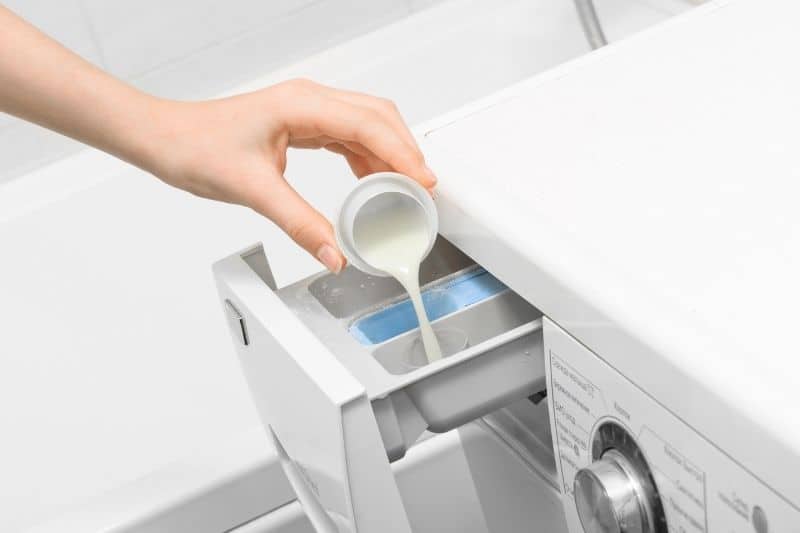
Choose your laundry detergent carefully to avoid damaging your clothes.
It’s easy to have one laundry detergent or one brand, at least, that you use and you don’t really shop around to see what else is out there to suit your needs better. It happens to the best of us. You stick to what you know.
Unfortunately, this could be costing you in every way. Find a detergent that is specifically formulated to be gentle on clothes and prevent colour fade.
To prevent black clothes from fading in the wash you could use Woolite Extra Dark Protection, which is designed to help your clothes keep their shape and stop them from fading.
Have a shop around for some extra-gentle laundry liquid and your clothes will thank you later.
7. Treat Stains ASAP!
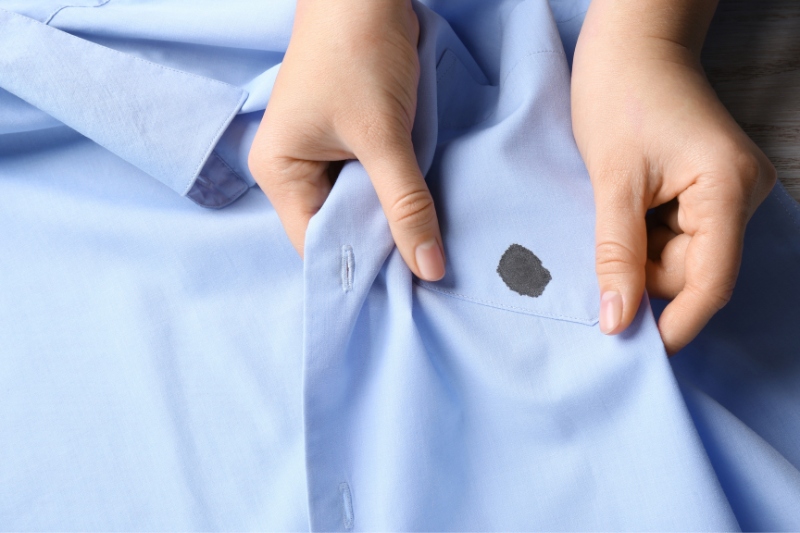
This one may sound obvious but with a lot of products out there claiming to remove stains that have been there for days, many people get lazy with it.
The fact of the matter is, the longer the stain is there; the harder it is to remove.
If you treat the stain as soon as possible, you’re more likely to get a better result. You’re also more likely to be able to treat it without harsh chemicals which may damage your garment.
There are small, to-go stain remover pens which you can carry around with you to treat stains as soon as they happen.
Some of the most popular are Tide To Go Instant Stain Remover Pens, which can be used for quickly dealing with tea, coffee, tomato and wine stains, among many others.
8. Avoid Using the Tumble Dryer

Tumble dryers are very convenient, but they can make your clothes to lose their shape and colour. Whenever possible, air-dry your clothes instead.
Hang them on a clothesline or use a drying rack to let them dry naturally. This method is particularly important for delicate fabrics or garments that are prone to shrinking.
You should also bear in mind that certain delicate materials such as wool and cashmere should be dried flat in order to prevent them losing their shape.
If you do decide to use a tumble dryer, select a low heat setting and remove the clothes while they are still slightly damp to minimise any potential damage.
9. Wash Less Frequently
While it’s important to keep your clothes clean, washing them too often can contribute to faster wear and tear, making them look old.
Many clothing items, such as jeans, sweaters, and jackets, don’t require washing after every single wear.
Washing them less frequently not only saves time and energy but also helps preserve their quality. Here are some tips for reducing the frequency of washing:
- Spot clean – Instead of washing clothes each time they get a small stain, try spot treating it instead. Use a gentle detergent or stain remover and gently dab the affected area with a clean cloth. This method can be particularly useful for lightly worn clothes that aren’t noticeably dirty.
- Air clothes to freshen them up – Not all clothes need to be washed immediately after wearing them. Items like jackets, blazers, and jeans can often benefit from simply airing them out. Hang them in a well-ventilated area, preferably outdoors, to allow fresh air to circulate and remove any odours. This method helps keep your clothes fresh without subjecting them to unnecessary washing.
- Use fabric sprays or bicarbonate of soda – If your clothes smell slightly but aren’t dirty, try freshening them with a fabric spray or bicarbonate of soda (baking soda). This will be kinder to your clothes than subjecting them to a washing machine and tumble dryer cycle.
10. Use a Fabric Shaver to Remove Pilling
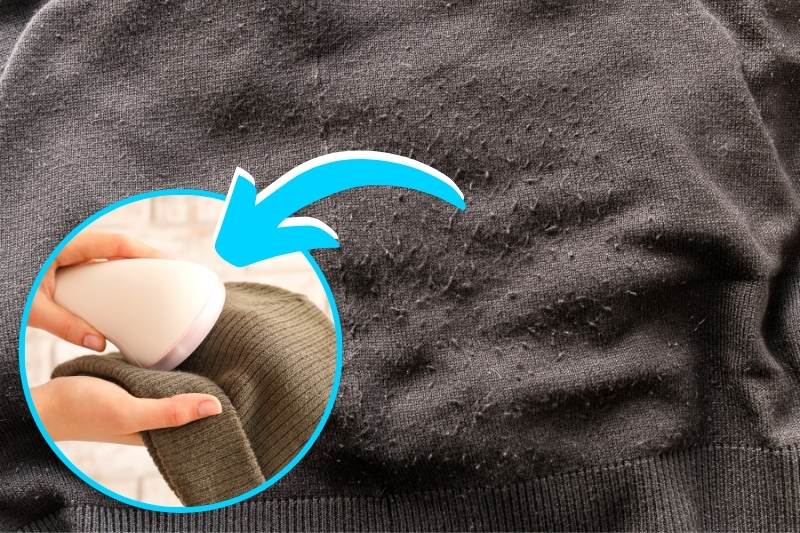
Pilling, those annoying little fuzz balls that form on the surface of fabrics, can make your clothes look worn out and less new.
However, there’s an easy solution to tackle this issue and restore the smoothness of your garments: a fabric shaver. A fabric shaver is a handheld device designed to remove pilling from fabrics effectively.
Getting rid of the bobbly on your jumpers and sweaters will make them look less old and worn out.
11. Sort Your Laundry
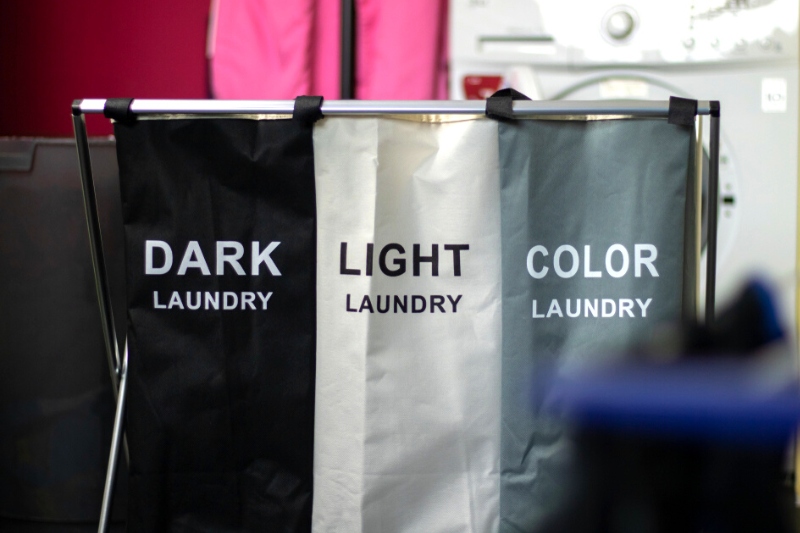
Sorting your laundry takes a bit of effort, but it can help avoid disasters such as colour run.
Separate your laundry into different piles based on colour, fabric type and washing instructions.
Washing dark and light colours separately can prevent colour bleeding and fading.
Delicate fabrics, such as silk or lace, should be washed separately or placed in mesh laundry bags to avoid snagging or stretching.
Taking a few extra minutes to sort your laundry can go a long way in preserving your clothes.
12. Treat Stains Carefully
Stains are an inevitable part of life, but how you handle them can make a significant difference in the longevity of your clothes.
Avoid rubbing vigorously, as it can damage the fibres. Instead, gently blot the stain using a clean cloth or sponge.
If you’re not sure how to treat a specific stain, consider taking your clothes to a professional dry cleaners instead of risking damaging your clothes by using the wrong stain removal technique.
13. Protect Clothes with Mesh Laundry Bags
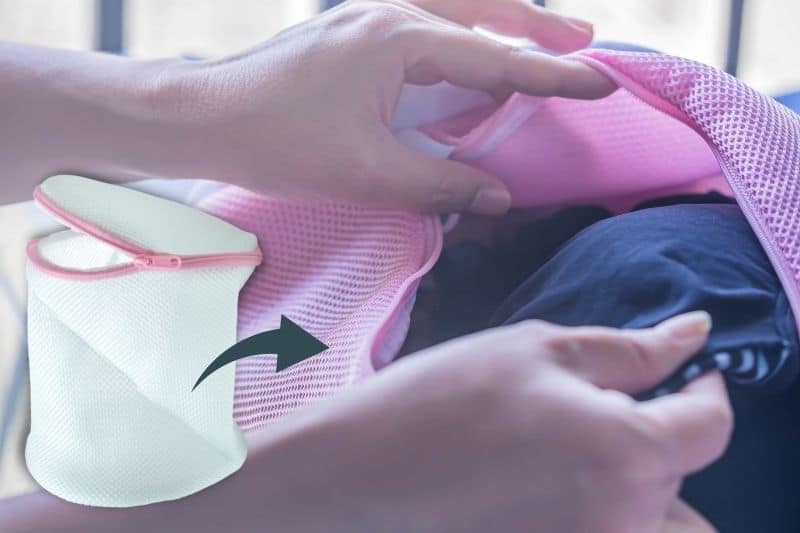
Using mesh laundry bags is an excellent way to protect your clothes from potential damage during the washing process.
These bags act as a barrier, preventing delicate fabrics from snagging, stretching, or tangling with other garments.
Laundry bags are recommended for delicate items like lingerie which can easily get snagged and damaged otherwise.
14. Protect Your Clothes from Moths
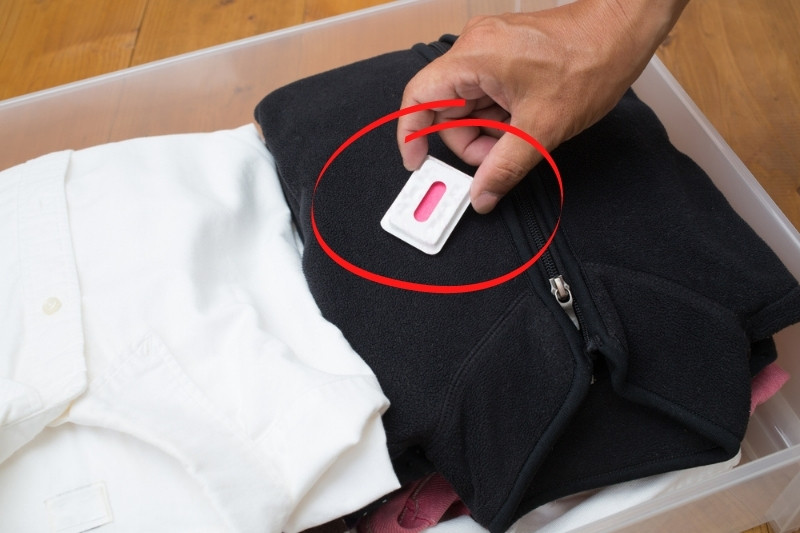
Moths can be a common nuisance that can wreak havoc on your clothing, feasting on your clothes and leaving it ridden with holes.
Here are some preventive measures you can take:
- Clean and store clothes properly – Moths are attracted to food particles, perspiration, and body oils that may be present on your clothes. Ensure your garments are clean before storing them.
- Use moth repellent products – Moth repellents can be effective in deterring these pests from your clothing. Cedar blocks, lavender sachets, or cedar oil are natural options that emit scents moths find unpleasant. Place these repellents in your wardrobe or storage areas to create a protective barrier against moths.
- Store clothes in airtight containers – Airtight containers like plastic storage bins or vacuum-sealed bags will help protect your clothes if you’re storing them for a long time. This prevents moths from laying eggs on your clothes. Make sure the containers are clean and dry before putting your clothes in them.
- Regularly inspect clothes – Take a look at your stored clothes every now and then to check for any signs of moth damage or infestation. Look for holes, webbing, or tiny larvae. If you notice any issues, clean and vacuum the area, and consider using a moth repellent.
- Consider freezing or heat treatment – If you think your clothes are infested with moths, try freezing them or putting them in the tumble dryer at a high temperature (if the care label says it’s ok to do so).
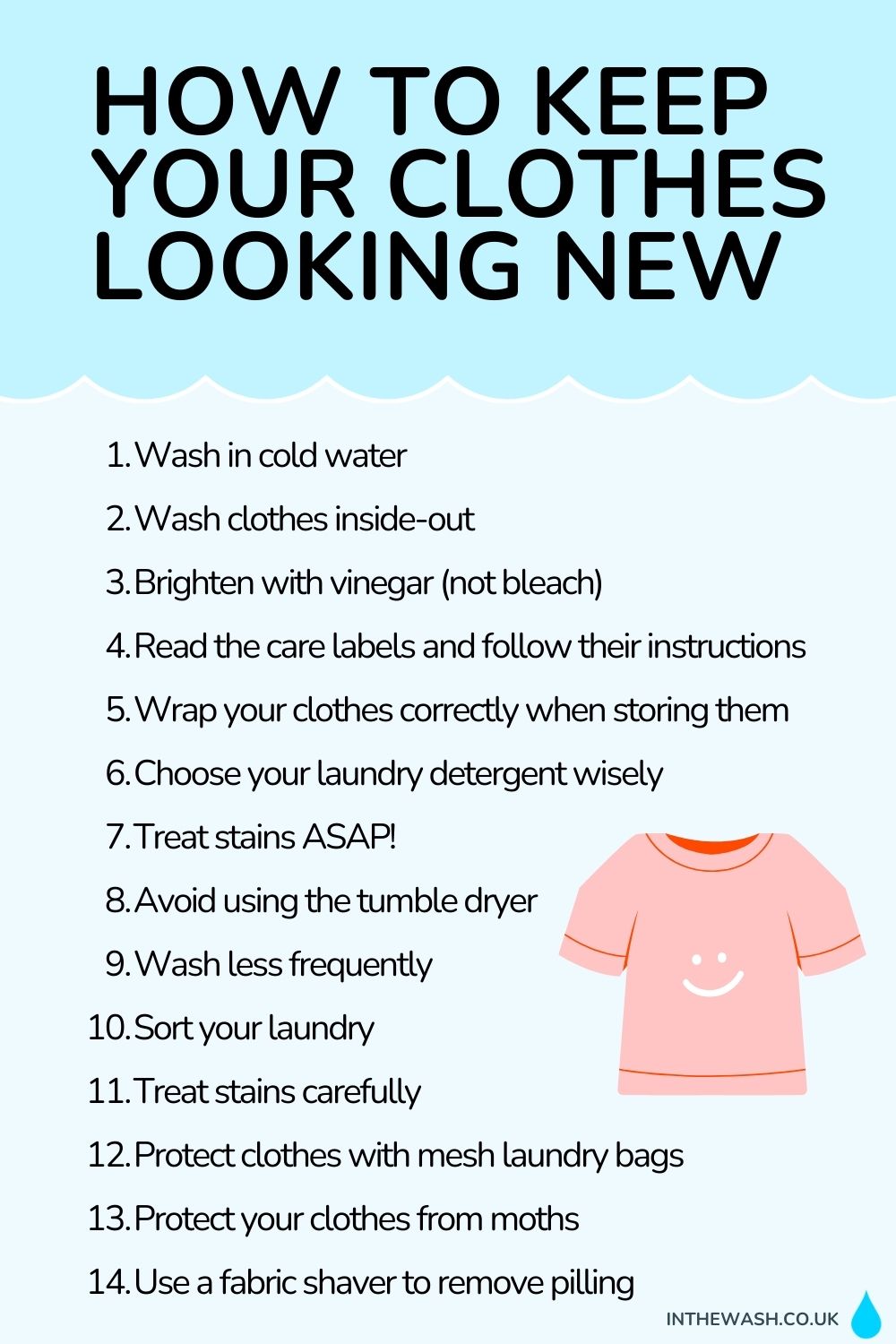

In The Wash is your guide to the best laundry and cleaning products, tips and tricks. Our mission is to solve the UK’s cleaning and laundry dilemmas!






